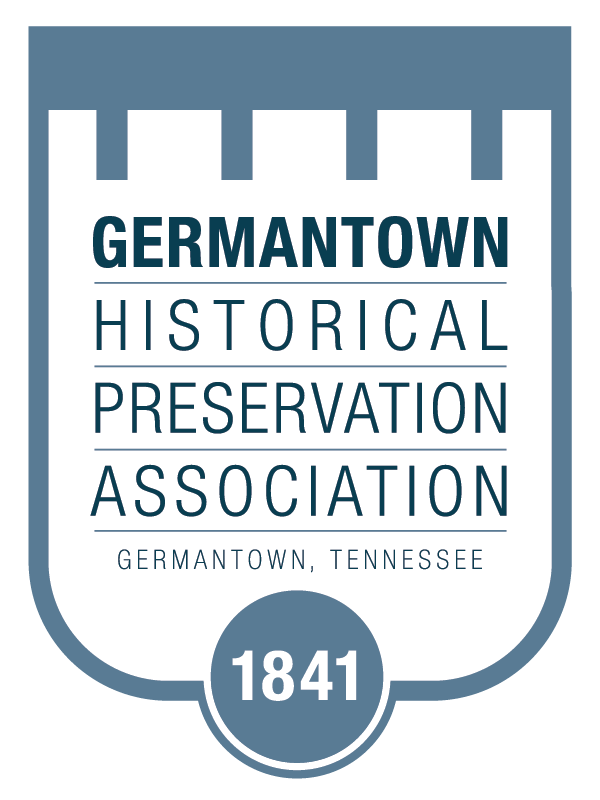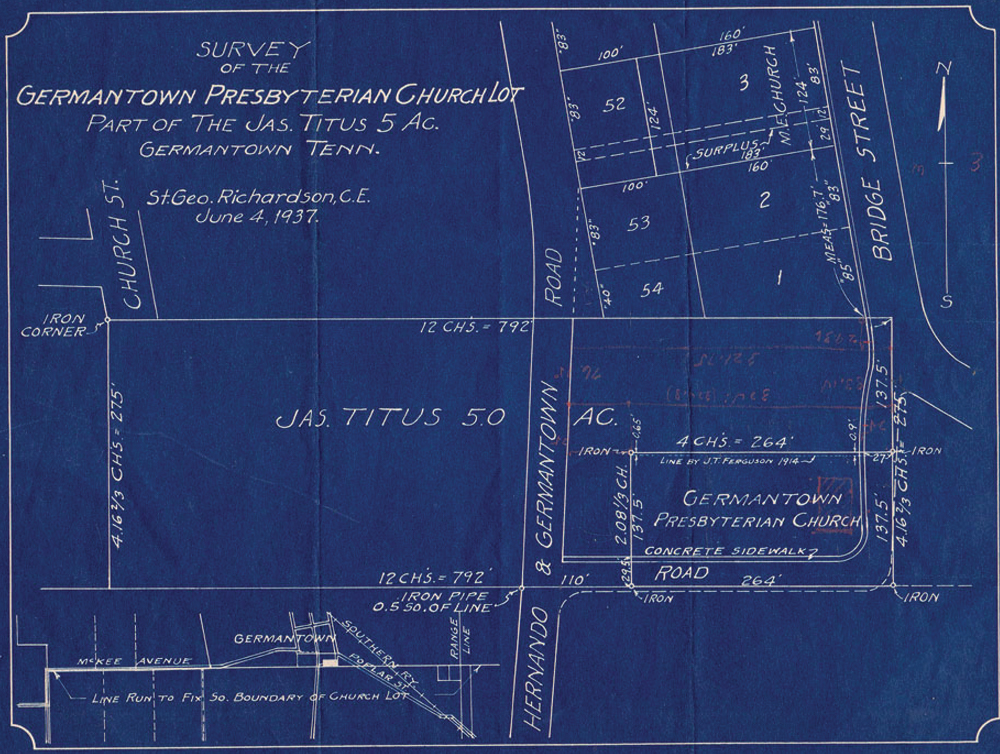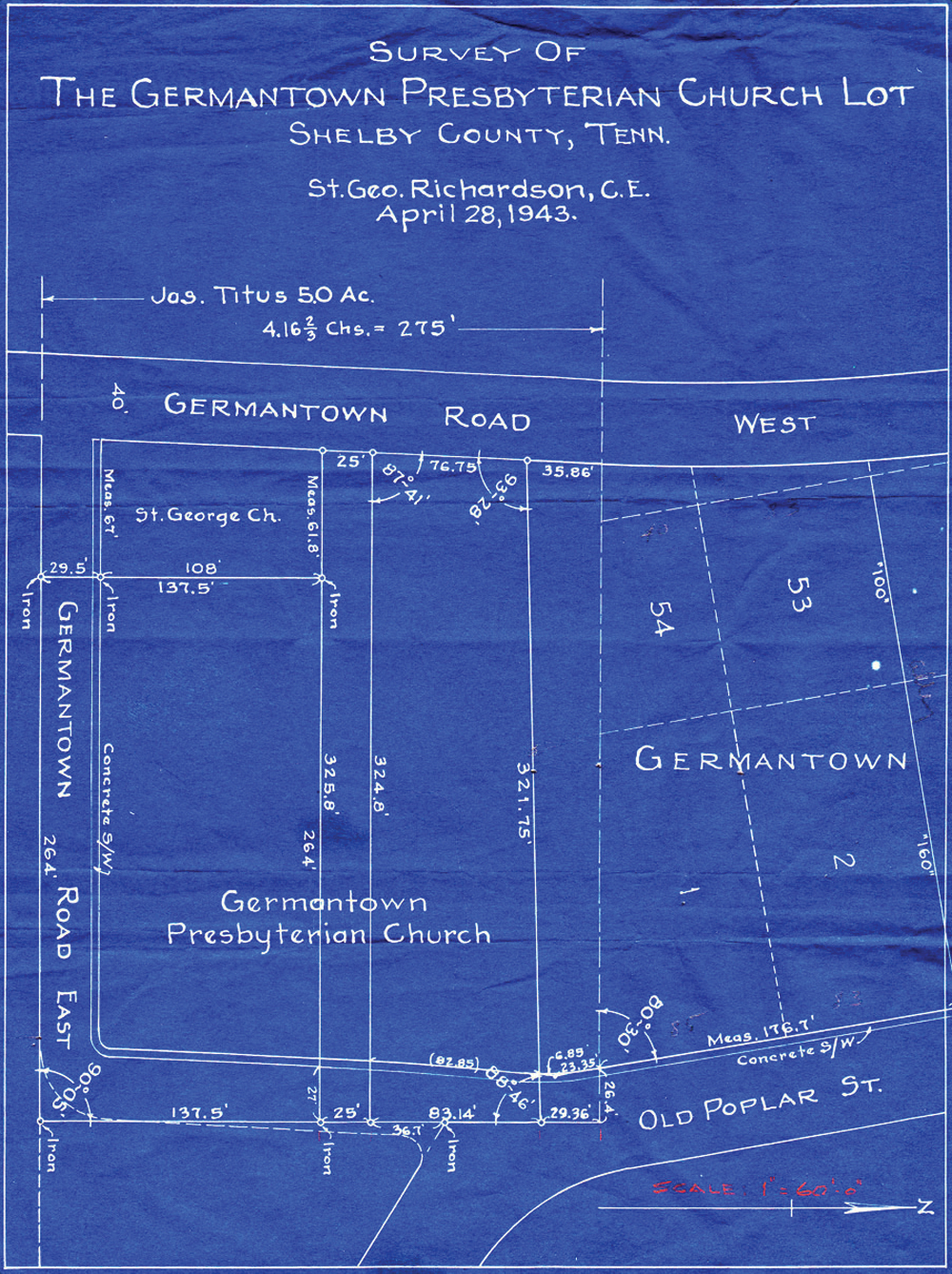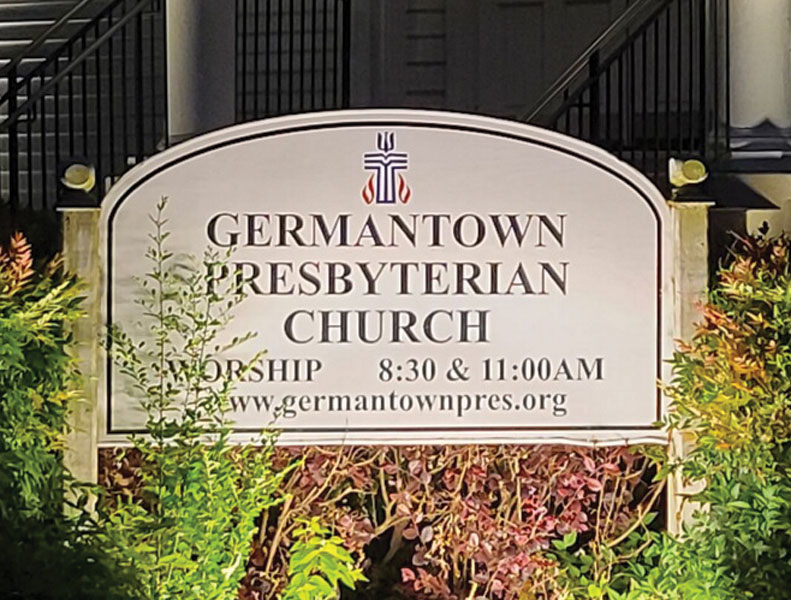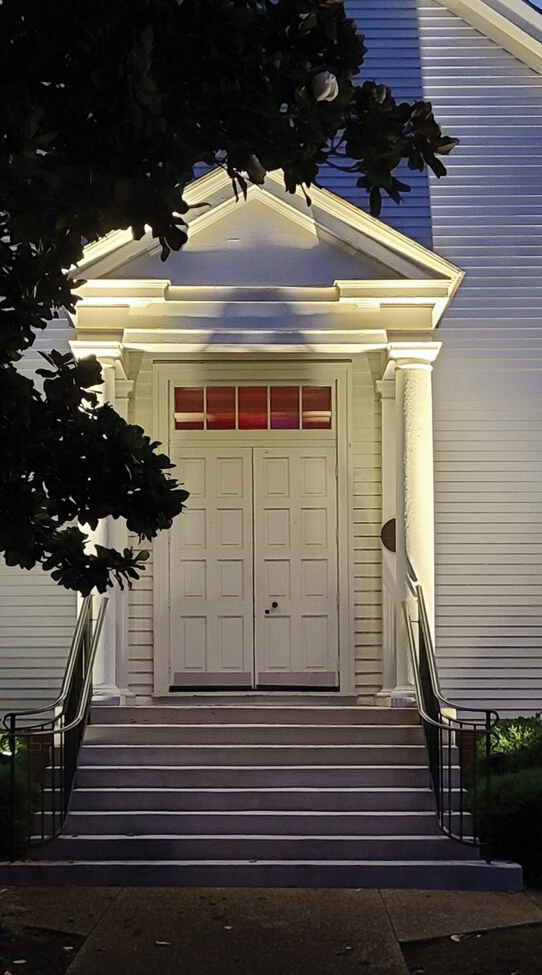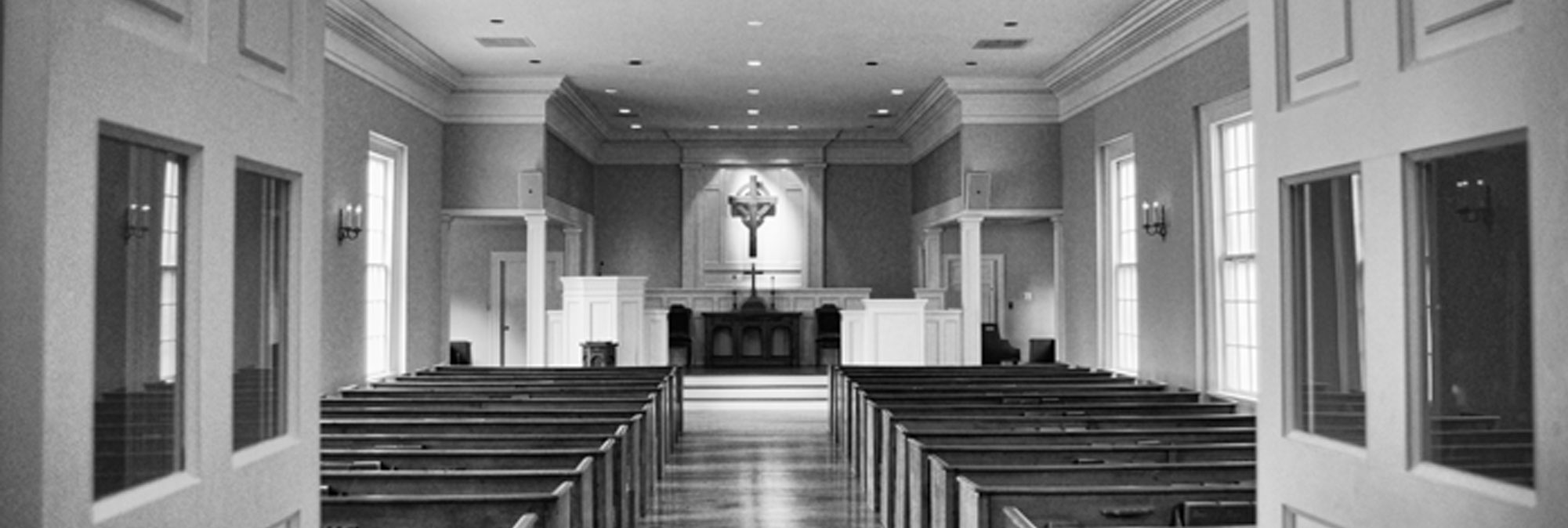
Germantown Presbyterian Church
The Germantown Presbyterian Church had its birth on March 24, 1838, when seven charter members, under the leadership of the Rev. A. G. McNutt were constituted a congregation by the Presbytery of the Western District of Tennessee, Presbyterian Church in the United States of America. From these humble beginnings, the church has grown to be a thriving congregation of nearly 1,000 members, serving the needs of her city and community.
In 1851, thirteen years after her organization and ten years before the beginning of the War Between the States, the congregation completed its first building. Located near the intersection of what is now Arthur Road and Old Poplar Pike, and facing north, this plain clapboard structure with its hand-hewn pews would serve as the congregation’s only house of worship for the next one hundred thirty-six years. This building, the oldest public building in Germantown, not only survived the ravages of war and a yellow fever epidemic but has maintained an enduring presence in the midst of a community that has grown from a small hamlet to an exploding suburban area which numbers more than 41,000.
Over the years, Germantown Presbyterian has been served by twenty pastors including four associate pastors. Two of these are worthy of special note, not only because of the longevity of their service but even more because of the beauty of their Christ-like character and their faithful and devoted ministry. They are the Reverend Richard Riley Evan, D.D., who served from 1851 until 1903, and the Reverend James Archibald Warren, D.D., whose pastorate spanned almost three decades in the century (1931-1959). Dr. Evans not only served the church as its only pastor for a half-century but conducted a school and is credited with having successfully intervened in saving the church building from being burned during the Civil War. Dr. Warren was the first full-time resident pastor and it was under his leadership that the church emerged from a struggling home mission-aid receiving congregation to one that was fully self-supporting, numbering approximately 150 members at the time of his retirement in 1959.
The church has been through three physical expansions during its 172-year history. In 1950-51, the original building was moved a few yards (from facing north) to locate facing east. It was renovated and expanded to include several classrooms and a fellowship hall in the basement. This was followed in the late 1960s by the addition of an attractive educational unit, offices, and a new fellowship hall. The third expansion occurred in 1986-87 after the congregation, in response to the rapid growth of the Germantown community, voted to build a new sanctuary. The sanctuary is of colonial design and continues the appealing simplicity of the original building. Additional educational space was added, also, and dedicated to the glory of God on Oct. 4, 1987. In 1996 the South Building, housing the Germantown Presbyterian Preschool, an Activity Center, and classrooms were added. As this is written, we are currently under another expansion with a master plan that includes a Welcome Center and many improvements to facilitate the mobility of the now large structure.
Germantown Presbyterian Church worships through scripture, prayer, music, and fellowship. As a congregation of the PCUSA, the church shares in the total mission and work of their denomination in the presbytery, synod, and General Assembly. Through benevolent giving, which accounts for 20-25% of the total budget, the church supports the mission of the whole Church both at home and around the world.
FORTUNATE SURVIVOR
Germantown Presbyterian Church is the only Germantown church to survive the war because of its strategic location on the Memphis & Charlestown Railroad. Many male members of the congregation joined the 4th Tennessee Infantry (CSA), while others resisted the occupying Federal troops.
Federal forces occupying Memphis used the railroad to move troops and supplies. Concerned that Confederate raiders would cut the rail line, Gen. William T. Sherman wrote commander-in-chief, Gen. Henry W. Halleck, on June 28, 1862, “Had we not better clean [out] Germantown, a dirty hole…They openly boast the Yankees shall never run a train over the road.” Memphis newspapers carried rumors of looting and building-burning by regular troops, stragglers, or camp followers. Some accounts alleged those entire towns were burned, including Germantown, while others asserted that only one house was burned, or none. The Germantown Presbyterian Church minister, the Rev. Richard R. Evans, persuaded a Federal officer to spare the church because they both were Masons. Together with the Masonic Hall, the church was saved and used as a hospital, commissary, and stable.
The Baptist and Methodist churches were burned. Pvt. Henry C. Bear, 116th Illinois Infantry, wrote on December 16, 1862, that “a house in Germantown” had been burned.
By 1863, a diarist wrote that “houses have been burned, and others are deserted and are used as soldiers’ barracks.”
Confederate supporters fought on until the end. The last engagement in Tennessee occurred about six miles outside Germantown on April 18, 1865, nine days after Confederate Gen. Robert E. Lee surrendered in Virginia.
Note:
Germantown Presbyterian Church is the town’s oldest public building. The Rev. A. G. McNutt and seven charter members organized the congregation on March 24, 1838; the Greek Revival–style frame church dates to 1851. The bell tower was added in 1867. The Rev. Evans (1820–1903) guided the congregation through the Yellow Fever epidemic of the 1870s, economic downturns, and the rebuilding of lives. He ministered here for 53 years. In 1950, the congregation rotated the church to face east, and it continues to serve as a chapel.
Click here to learn more about the church https://germantownpres.org/
The photo was taken on February 3, 1916, at 2:30 p.m. from 200 feet east of Methodist Church. Methodist Church was on McVay Road at the time. In the photo, the Germantown Presbyterian Church is seen in the distance (when it faced north and south) with the Presbyterian Manse (or pastor’s house) to the right or west of the church. The photo states that the gin burned on the night of January 17, 1916.
Germantown Presbyterian Church Lot, April 28, 1937
Germantown Presbyterian Church Lot, April 28, 1943
Germantown Presbyterian Church facing North and South (original orientation – January 3, 1945)
Germantown Presbyterian Chapel at night
Germantown Presbyterian Chapel at night
Germantown Presbyterian Chapel at night
